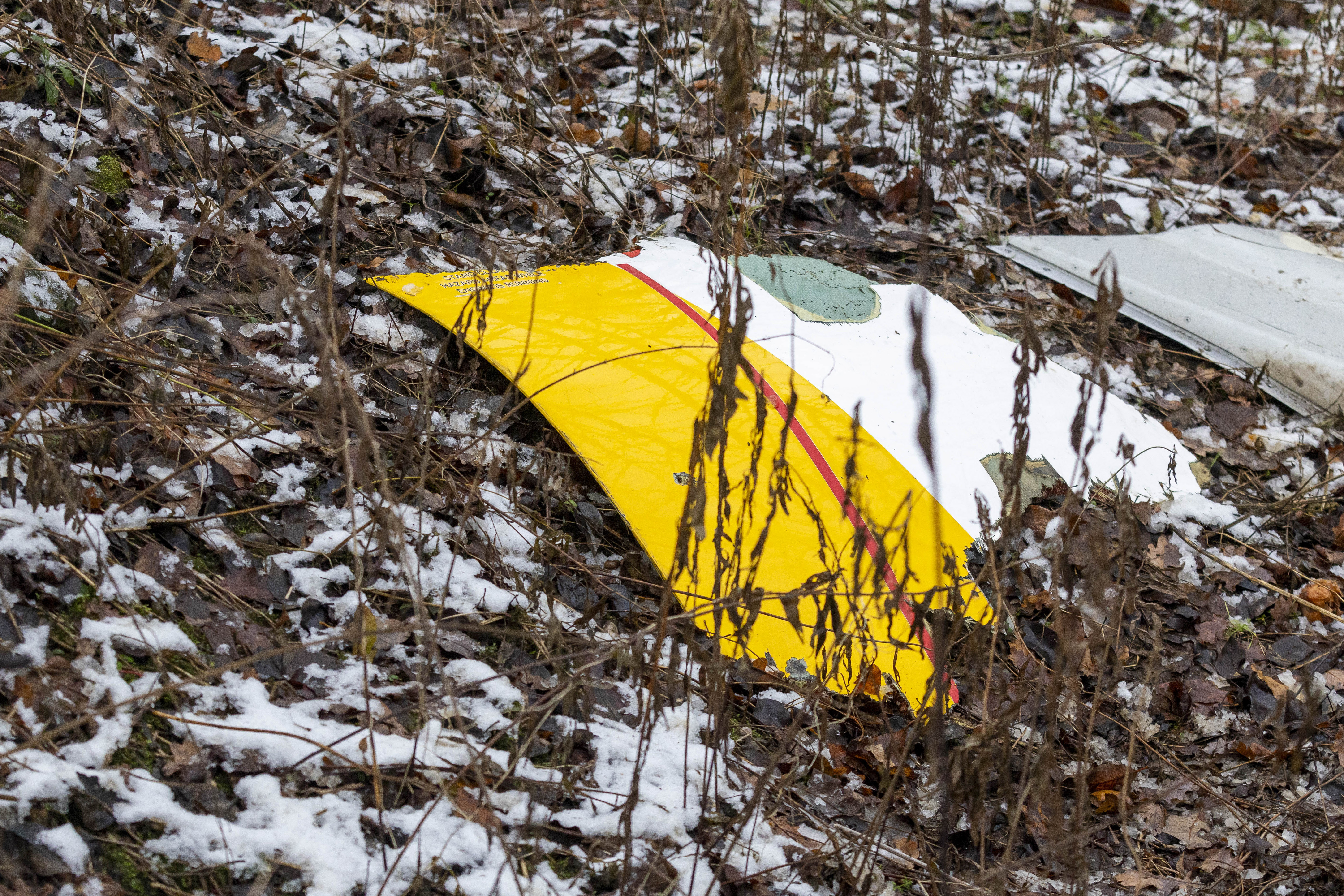ARTICLE AD BOX
SHOCKING satellite pictures appear to reveal a secret Iranian military base used to train Houthi rebels as the terror group now wreaks havoc in the Red Sea.
A bombshell report seen by The Sun claims Iran’s warped terrorist army, the Islamic Revolutionary Guard Corps (IRGC), trained up hundreds of Houthi recruits.
 Google Maps
Google Maps Google Maps
Google Maps AP
AP Getty
Getty
The report, by the National Committee of Resistance of Iran (NCRI), appears to reveal a secret base within an Iranian naval academy.
Used as early as 2020 to train up hundreds of recruits with IRGC support, the report could serve as smoking gun evidence proving the widely known link between the Iranian military and Houthi terrorists.
And it means the IRGC may have equipped the same Houthi terrorists with naval warfare techniques who are ambushing Israeli, American and British ships in the Red Sea four years on.
Khamenei Academy of Naval Sciences and Technology, on the northern Iranian coast in Ziba Kenar, could have seen hundreds of recruits come and go since it first started in 2013.
The shocking report revealed that in January 2020, a special training program was launched for about 200 Houthis inside the campus.
Part of the extensive compound is used for a six-month residential training course for students with the Quds Force – one of the IRGC’s five branches.
Their housing was also kept separate from other students, who were barred from interacting with them to prevent intelligence leaks.
The IRGC Quds Force has been engaged in training, financing, and providing weapons, and logistics to Houthis and other proxy groups throughout the region for the past decades
Hossein AbediniHossein Abedini, Deputy Representative Of NCRI In the UK told The Sun: “The IRGC Quds Force has been engaged in training, financing, and providing weapons, and logistics to Houthis and other proxy groups throughout the region for the past decades.
“It has established specific headquarters for various trainings of its proxy forces, including the naval forces.
“Veteran Quds Force officers have trained them, and the most senior Quds Force commanders have been commanding the training and the process.”
This university was established in August 2013 and quickly expanded to carry out all IRGC naval training, including for different proxy groups.
Weapons smuggling for Red Sea battles
And the bombshell report goes on to show that the Quds naval force’s remit extends beyond just Houthi training.
Using asymmetric warfare tactics laid out by the IRGC, the unit carved out smuggling networks which provide weapons and equipment “to expand conflicts into the Arabian Sea, Bab al-Mandab, and the Red Sea”.
The report also revealed the location of Farur Island, a small, uninhabited island in the middle of the Persian Gulf that
is controlled by the IRGC Navy.
It is considered to be one of the main channels for smuggling arms into Arab countries – and is also used for naval training of foreign
mercenaries.
Who are the Houthis?

THE Houthi rebels are terrorising vessels and warships in the Red Sea - but who are they?
The Shia militant group, which now controls most of Yemen, spent over a decade being largely ignored by the world.
However, since the outbreak of the Israel-Gaza war, they sprung from relative obscurity to holding roughly £1trillion of world trade hostage – turning one of the world’s busiest shipping lanes into an active warzone.
Their warped slogan is “Death to America, Death to Israel, curse the Jews and victory to Islam”.
The rebel group has been launching relentless drone and missile attacks on any ships – including warships – they deem to be connected with Israel in solidarity with their ally Hamas.
The sea assaults have threatened to ignite a full-blown war in the Middle East as ripples from Israel’s war in Gaza are felt across the region – with Iran suspected of stoking the chaos.
However, there have been frequent attacks on commercial vessels with little or no link to Israel – forcing global sea traffic to halt operations in the region and sending shipping prices soaring.
Houthi attacks in the Red Sea increased by 50 per cent between November and December.
The rebel group’s leaders have previously pledged the attacks will continue until Israel stops its devastating offensive inside Gaza – despite recent US and UK strikes on their military strongholds.
Iran-backed terror proxies
Since Hamas struck Israel in an unprecedented attack on October 7, the IDF forces have been rampantly blitzing Gaza to eradicate the terror group.
More than 26,000 Palestinians have been killed since the IDF started its operation in the narrow strip, the Hamas-run health ministry has said.
As Israel continues the offensive in bomb-blitzed Gaza, Iran-backed terror proxies continue to unleash hell on the sidelines.
Iran-backed Lebanese terror group Hezbollah has been engaged in daily border clashes with Israel – forcing a sizeable chunk of the Israeli army to be pinned down on its northern border.
The Houthis have been relentlessly attacking cargo ships passing through the Red Sea in a bid to show support Hamas and hit Israel and its allies.
Red Sea attacks
Roughly 10 per cent of all global trade passes through the treacherous route each year and about 17,000 ships, putting £2.4trillion worth of world trade at risk.
In December 2023, the US launched a multinational joint-military coalition called Operation Prosperity Guardian to respond to the threats posed by the Houthis in the region.
Earlier this month, British and US warships blitzed at least 60 targets of the rebel groups inside their strongholds in Yemen in what is being called a dramatic escalation of the conflict.
Western coalition forces smashed dozens of military targets, including an airbase, airport and army camp.
Just days ago, a second strike by the UK and US unleashed laser-guided bombs to blast eight Houthi sites after rebels refused to halt attacks on ships in the Red Sea.
It came just hours after Rishi Sunak and Joe Biden warned the Iranian-backed militants they would strike Yemen again “if needed”.
Despite the attacks, the rebel forces have vowed to retaliate to a scale “beyond the imagination” and told the US and Britain they had made a “huge mistake launching the war in Yemen”.
Houthi spokesman Muhammad Al-Bukhaiti also added on Al-Arabi TV that “American interests will be a target for our forces wherever they are”.
Just days ago, a deadly drone attack on a US base near Syria hit the American soldiers‘ living quarters – and killed three of them.
The Pentagon identified those who died on January 28 as William Jerome Rivers, 46, Kennedy Ladon Sanders, 24 and Breonna Alexsondria Moffett, 23.
Their deaths mark the first time American troops have been killed by enemy fire in the Middle East since the beginning of the Israel-Palestine conflict, which began in October.
US President Joe Biden said on Sunday that while officials were still “gathering facts”, it was clear that the attack was “carried out by radical Iran-backed militant groups operating in Syria and Iraq”.
Former British Army commander Colonel Richard Kemp told The Sun the US must inflict “severe violence” on Iran as quickly as possible or risk facing more attacks.
He said: “The attacks against US forces in Jordan are a major new escalation because although there have been something like 160 attacks against US forces by Iranian proxies in the last two or three months, this is the first time that we’ve seen three Americans killed.
“It needs to be a hit on IRGC positions, bases, and individuals resulting in severe destruction and death to Iranian terrorists who have been responsible for these attacks.
“The Americans must respond in a decisive way.”
Houthis’ secret terror meetings
Last week, the Houthi rebels allegedly held secret terror meetings with al-Qaeda to plot a wave of “suicide attacks” against the West.
They reportedly tried to “persuade” their Islamist terrorist allies to join their fight in the Red Sea to help inflict further pain on their “mutual enemies”.
According to Yemeni sources, the meetings were held in both Yemen’s capital Sanaa as well as Hodeidah, the Houthi Red Sea port stronghold.
Clerics loyal to the Houthis met with al-Qaeda chiefs in an apparent bid to convince them to carry out their “legitimate duty” to confront Western “aggression”, Sky News Arabia reported.
Meanwhile, a top Iranian spy chief and his deputy commander were killed in an alleged Israeli airstrike in Syria last week.
The strike wiped out four members of the Iranian Revolutionary Guards, including the two senior members in Damascus.
Members of the Iran-backed group were reportedly holding a meeting when the airstrike hit.
Confirming the death toll, the Iranian Revolutionary Guards Corps has accused Israel of assassinating its members.
 Google Maps
Google MapsWhat is the IRGC?

CREATED in the aftermath of the Iranian Revolution in 1979, the Islamic Revolutionary Guard Corps (IRGC) is a branch of Iranian army that upholds the integrity of the Islamic Republic.
It has become one of the most powerful paramilitary organizations in the Middle East and has been accused of carrying out global terrorist attacks.
For decades, IRGC has fostered terrorism and supported conflict in the region through its proxy war groups such as Hezbollah in Lebanon, Houthis in Yemen, and Hamas in the Gaza Strip.
Currently, the paramilitary force is designated as a terrorist organization by Bahrain, Saudi Arabia, Sweden and the United States.
 AFP
AFP AFP
AFP.png)
 9 months ago
4
9 months ago
4








 English (US)
English (US)